Monthly Archives: January 2025
SOURCE: IDRW.ORG


In a significant stride for India’s defense innovation and export capabilities, Big Bang Boom Solutions Pvt. Ltd., a winner of the Innovations for Defence Excellence (iDEX) initiative, has successfully exported the first unit of its groundbreaking Vajra Super Shot to the Kenyan Ministry of Defence. This achievement, facilitated by the Department of Defence Production (DefProdnIndia), underscores the growing impact of the ‘Make in India’ initiative in global defense innovation.
The Vajra Super Shot is a cutting-edge counter-drone system designed to address emerging threats posed by unmanned aerial vehicles (UAVs).
Continue readingSOURCE: AFI


In a notable reflection of his transactional approach to foreign relations, former US President Donald Trump publicly urged India to ramp up its procurement of US-made defense systems. His comments suggest that even the substantial defense contracts between India and the United States over the years, including the Rs 32,350 crore (approximately $3.9 billion) deal for 31 armed MQ-9B Predator drones finalized in October 2024, may not fully satisfy American expectations.
India has increasingly turned to the United States as a key defense supplier over the past decade and a half. Since 2007, Washington has secured over $25 billion worth of defense contracts with New Delhi, spanning a wide range of platforms and technologies. These deals underline the deepening strategic partnership between the two nations, driven by shared geopolitical interests, particularly in countering China’s growing influence in the Indo-Pacific region.
Continue readingSOURCE: AFI
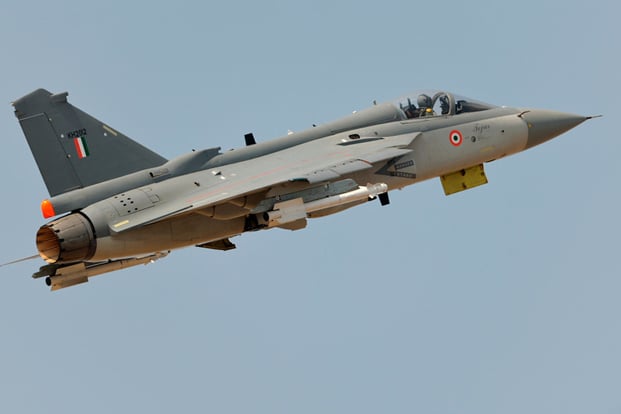

In response to the ongoing shortfall of fighter jets within the Indian Air Force (IAF), the first squadron of the indigenous Light Combat Aircraft (LCA) Tejas Mk1, previously stationed at Sulur in Tamil Nadu, has been redeployed to a forward airbase in the western sector. This strategic move is aimed at enhancing the IAF’s interceptor capabilities, particularly along the border regions, following the integration of Beyond Visual Range (BVR) missile upgrades to the aircraft which were initially not part of the Initial Operational Clearance (IOC) configuration.
The relocation of the “Flying Daggers” squadron underscores the IAF’s commitment to bolstering its air defence capabilities in a region where tensions necessitate a strong aerial presence. The Tejas Mk1, with its new BVR capabilities, can now engage targets at extended ranges, significantly increasing the effectiveness of air operations in this critical area.
Continue readingSOURCE: AFI


NewSpace Research and Technologies, a trailblazer in India’s aerospace sector, has recently showcased a groundbreaking new type of loitering munition that promises to redefine tactical aerial capabilities. The design of this new munition features a distinctive cropped delta-wing configuration, with the central fuselage seamlessly integrating into the wings. Stabilizing rudders at the wingtips add to the aerodynamic profile, while an autonomous pusher-propeller system is set to provide both stealth and efficiency in flight.
The loitering munition’s design aesthetics and engineering suggest it is tailored for long-range operations. Analysts and enthusiasts alike are speculating that this drone could achieve a range between 300 to 500 kilometers, offering significant strategic advantages in surveillance, reconnaissance, and precision strike missions. This capability would mark a notable advancement in the field of unmanned aerial systems, especially given its potential for slow, prolonged loitering over areas of interest.
Continue readingSOURCE: AFI


Recent images released on Chinese social media platform Weibo have provided a fascinating glimpse into the evolving design of China’s J-XDS, a sixth-generation fighter jet. This development represents a significant leap in China’s pursuit of cutting-edge aviation technology and air dominance. The innovative design features of the J-XDS indicate an emphasis on stealth, agility, and advanced combat capabilities, marking a major milestone in the People’s Liberation Army Air Force’s (PLAAF) modernization efforts.
One of the standout features of the J-XDS is its full-moving wingtips, a departure from traditional fighter aircraft designs. This unique aerodynamic feature is likely aimed at maximizing the fighter’s maneuverability during high-speed and complex flight operations.
Continue readingSOURCE: AFI


In a recent statement that has stirred significant controversy and public debate, Sam Pitroda, Chairman of the Indian Overseas Congress, suggested that India should accommodate illegal immigrants, advocating for a policy where Indians “share” resources, even at the cost of some “suffering.” This suggestion has not only ignited a political firestorm but has also led to calls for accountability, particularly from those who see it as an overreach by a non-Indian citizen into India’s domestic affairs.
Pitroda’s remarks were made in the context of discussing immigration policies, where he argued for a more inclusive approach towards illegal immigrants in India. His comments implied that the Indian population should be prepared to share their resources and endure any resultant hardships. This perspective has been met with backlash, especially given India’s already strained infrastructure and resources.
Continue readingSOURCE: RAUNAK KUNDE / NEWS BEAT / IDRW.ORG


In a significant stride towards self-reliance in defence manufacturing, the Indian Army is poised to enhance its armoured capabilities with the introduction of the Arjun MkI Main Battle Tank (MBT) powered by the indigenous DATRAN 1500Hp engine, expected to enter production from 2028 onwards. This development comes in the wake of challenges faced with the supply of engines from Germany, marking a pivotal moment for India’s defence sector.
The Arjun tank, named after the legendary warrior from the Indian epic Mahabharata, has been a project of national pride but also one fraught with delays and technical challenges. Initially, the Indian Army had placed orders for 118 units of the upgraded Arjun Mk1A MBTs, which were expected to be powered by German-made MTU engines. However, MTU, the German engine manufacturer, ceased production of the engines used in the older Arjun MkI MBTs and was not willing to resume for what they considered a minor order size, leading to a significant delay in tank deliveries.
Continue readingSOURCE: RAUNAK KUNDE / NEWS BEAT / IDRW.ORG
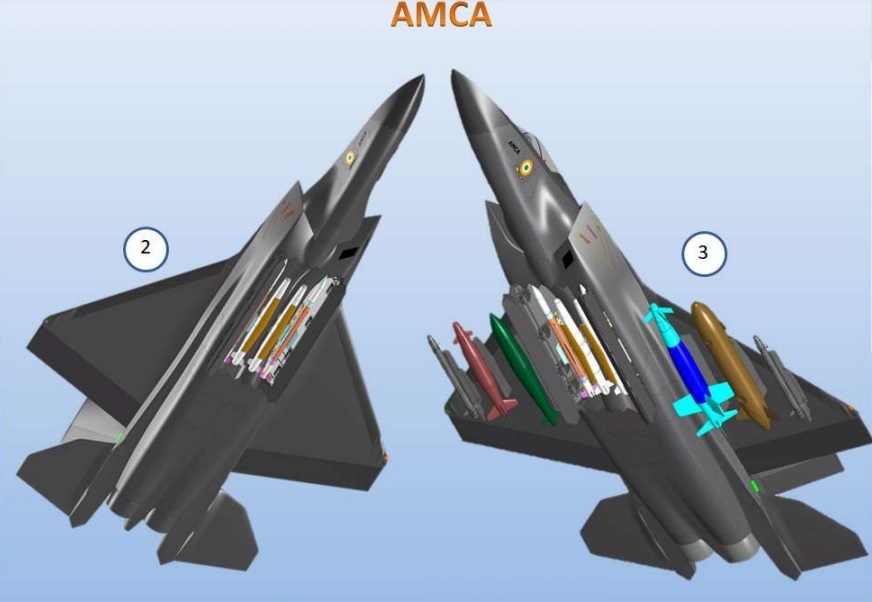

India’s ambitious fifth-generation Advanced Medium Combat Aircraft (AMCA) is set to incorporate a unique “Beast Mode” configuration, as per Air Force planners. This loadout emphasizes maximum firepower at the expense of stealth, providing enhanced capabilities for specific mission profiles.
Beast Mode refers to a combat configuration where the AMCA carries a significantly higher payload of bombs and missiles on external hardpoints. Unlike its typical stealth mode, where weapons are housed in internal bays to minimize radar cross-section, this configuration prioritizes firepower over stealth.
Continue readingSOURCE: RAUNAK KUNDE / NEWS BEAT / IDRW.ORG
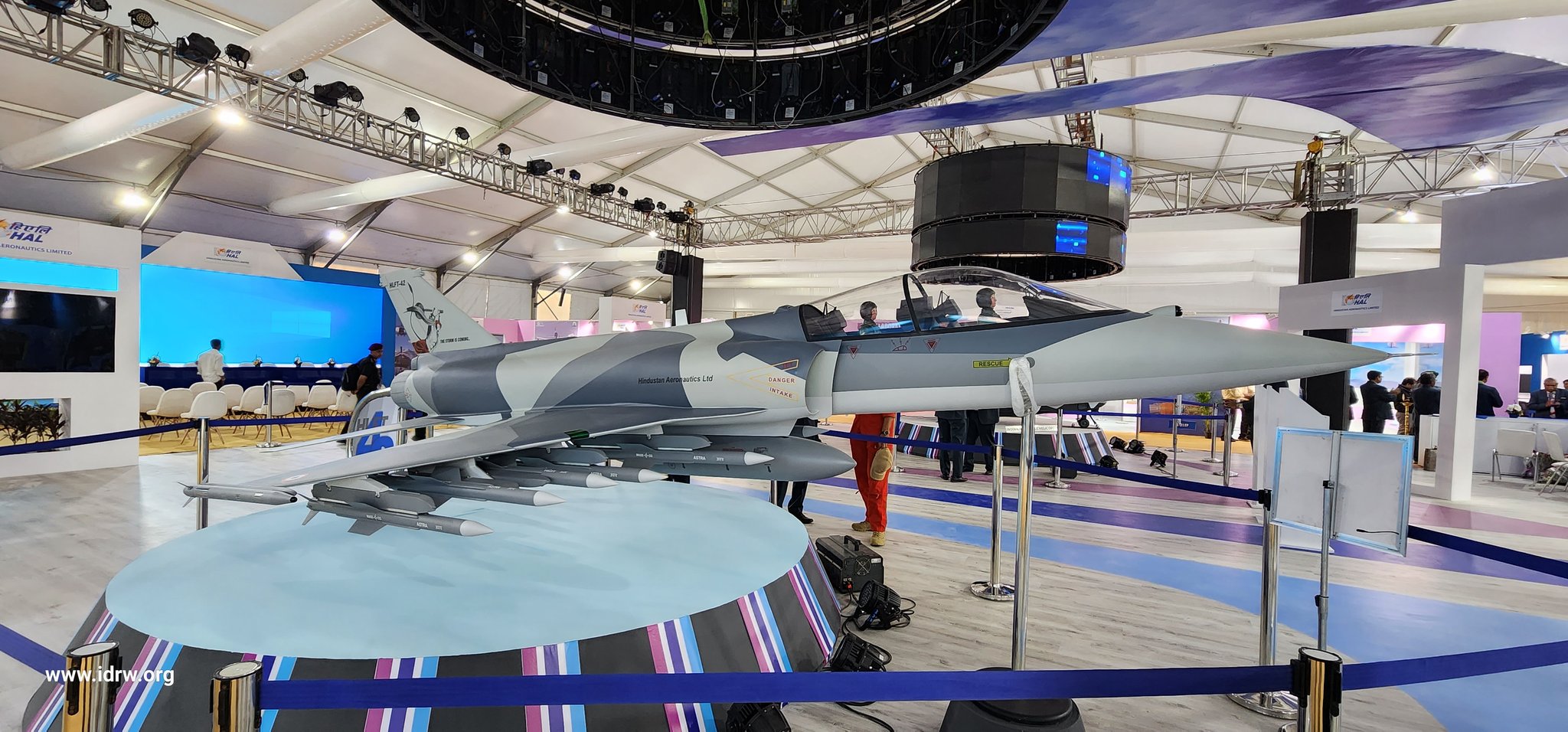

Hindustan Aeronautics Limited (HAL) is gearing up to introduce the Hindustan Lead-in Fighter Trainer (HLFT-42), an aircraft designed to serve dual roles as both an advanced training platform and a light combat-capable fighter. The HLFT-42 will be equipped with an Active Electronically Scanned Array (AESA) Radar, enhancing its ability to detect and engage multiple targets, along with a suite of weapons, making it a formidable asset in combat scenarios.
This aircraft is not only tailored for the Indian Air Force’s training needs but is also designed with an export market in mind. Its adaptability allows for customization according to specific customer requirements, making it scalable, interoperable, and configurable. This flexibility is expected to appeal to a broad range of international buyers looking for cost-effective, yet advanced fighter trainers.
Continue readingSOURCE: AFI
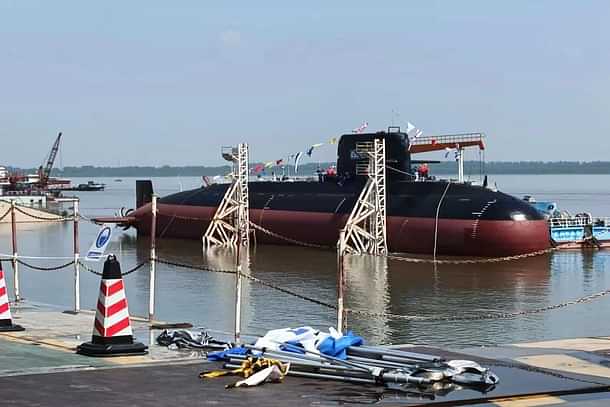

In a recent interview with SUNO News HD, Commodore (R) Syed Muhammad Obaidullah of the Pakistan Navy made bold claims regarding the superiority of the Chinese-supplied Hangor-class submarines over the French-designed Scorpène-class submarines operated by the Indian Navy. According to Obaidullah, the edge lies in the Chinese Air Independent Propulsion (AIP) system.
However, this narrative requires a deeper examination of the technology at play. The Hangor-class submarines, an export variant of China’s Type 039A Yuan-class, are indeed equipped with AIP, but the specifics of this technology merit scrutiny.
Continue readingSOURCE: AFI
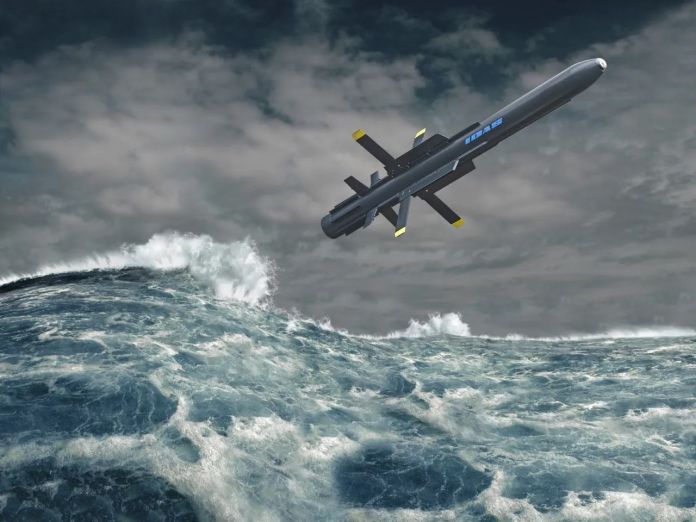

In a significant development for underwater warfare, Thyssenkrupp Marine Systems (TKMS) and Diehl Defence are set to redefine submarine self-defense with their Interactive Defense and Attack System (IDAS). This innovative system, which allows submarines to engage aerial threats while submerged, has caught the attention of several countries, including India, which is poised to leverage this technology in its naval expansion plans.
Traditionally, submarines have been vulnerable to aerial threats like ASW helicopters equipped with dipping sonar and lightweight torpedoes. IDAS breaks this paradigm by enabling submarines to counter these threats without breaking the water’s surface, thus maintaining stealth.
Continue readingSOURCE: AFI
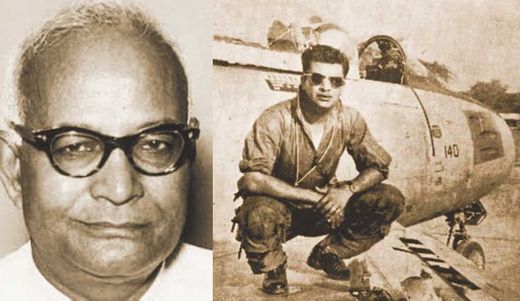

The recently released film “Sky Force,” starring Akshay Kumar, Veer Pahariya, and Sara Ali Khan, has rekindled interest in one of the most tumultuous chapters of Indo-Pak relations – the 1965 war. While the movie celebrates the valor and victory of India’s armed forces, it also brings to light a somber moment from that conflict, the tragic loss of an Indian Chief Minister, Balwantrai Mehta.
“Sky Force” has not only been a box office hit but also a cultural phenomenon, with audiences leaving theaters chanting “Bharat Mata ki Jai” and “Vande Mataram,” reflecting a surge of national pride. However, this pride comes with a reminder of the war’s grim realities, including the incident that claimed the life of Gujarat’s then-Chief Minister.
Continue readingSOURCE: AFI


On the night of March 28, 2024, Flight Lieutenant Aman Singh Hans embarked on what was supposed to be a routine long-range ferry mission aboard a MiG-29 aircraft, heading towards Exercise Gagan Shakti-24. The mission took an unexpected turn when, 20 minutes into the flight and at an altitude of 28,000 feet (8.5 km), the aircraft’s canopy suddenly detached. This left Hans exposed to the harsh conditions of high-altitude flight, including temperatures plummeting to minus 35° to 40° Celsius, the risk of decompression sickness, hypoxia, and the severe wind blast affecting his vision.
In this dire situation, Flight Lieutenant Hans demonstrated extraordinary composure. With the Head-Up Display (HUD) and visual references gone, he relied solely on head-down instruments to maintain control of the aircraft. He promptly declared an emergency using the standby radio, navigated away from civilian airspace, and began descending to a safer altitude of 3 kilometers, all while battling severe eye pain due to the wind blast.
Continue readingSOURCE: Rolls-Royce
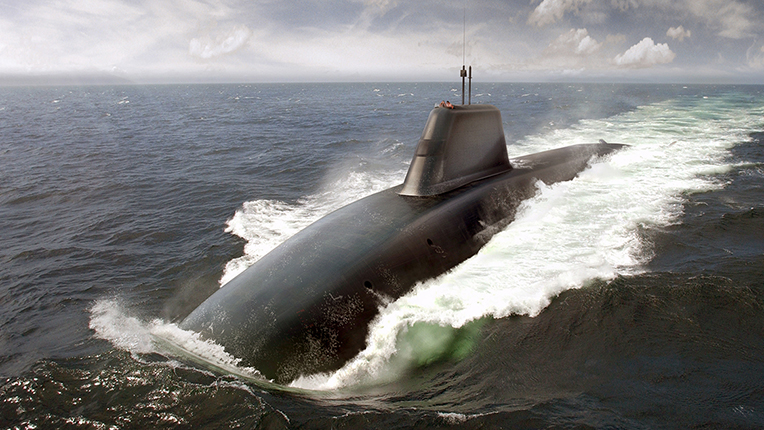

Rolls-Royce has signed the biggest UK Ministry of Defence (MoD) contract in its history. The Unity contract stretches over eight years and brings together all elements of research and technology, design, manufacture and in-service support of the nuclear reactors that power the Royal Navy’s fleet of submarines. This contract between Rolls-Royce Submarines Ltd and the UK MoD, forms a single, harmonious capability portfolio.
Unity will enable improved focus on simplification and efficiency and better outcomes for the UK Royal Navy. It represents a significant undertaking and investment by the UK government and industry, providing thousands of highly skilled jobs across the country and an enduring commitment for the decades ahead. This is truly a national endeavour.
Continue readingSOURCE: IDRW.ORG

The Official United States Air Force Website has announced the cancellation of the much-anticipated F-35 and F-16 demonstrations scheduled for the Aero India 2025 to be held in Bengaluru from February 10th to 14th, 2025.
This decision marks a notable change to the lineup of the event, which is one of the largest aerospace exhibitions in Asia, showcasing the latest in military and civilian aviation technology. The cancellation comes as a surprise, given the historical presence of U.S. Air Force (USAF) aircraft at such international platforms to demonstrate their capabilities and foster military cooperation.
Continue reading